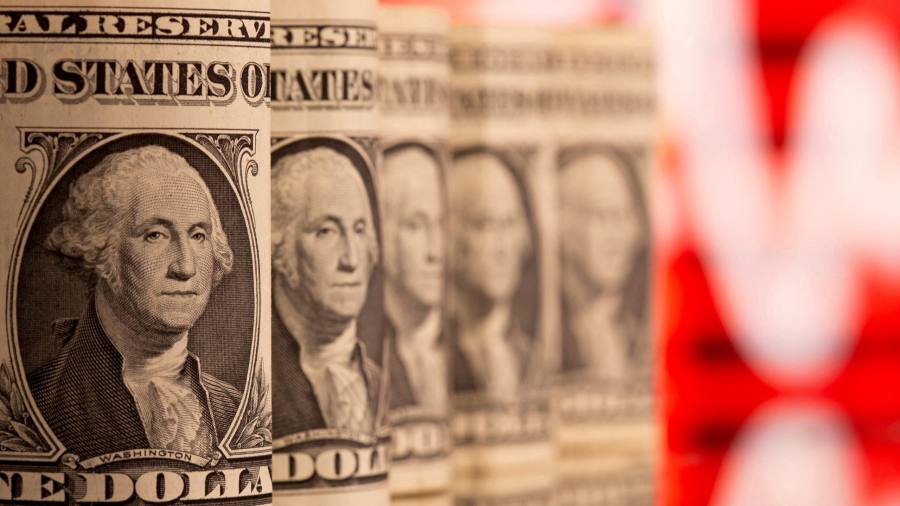The writer is the global head of short-term interest rate strategy at Credit Suisse
Since the end of the cold war, the world has largely enjoyed a unipolar era — the US was the undisputed hegemon, globalisation was the economic order and the dollar was the currency of choice. But today, geopolitics once again pose a formidable set of challenges to the existing world order. That means investors have to discount new risks.
China is proactively writing a fresh set of rules as it replays the Great Game, creating a new type of globalisation through institutions such as the Belt and Road Initiative, the Brics+ group of emerging economies and the Shanghai Cooperation Organisation, a collective security alliance of eight countries.
While under lockdown, Beijing forged a special relationship with Moscow and Tehran. This relationship with Russia, with the unwitting assistance of global warming, is helping extend China’s BRI through Arctic shipping lanes. And late last year, we saw the very first summit between China and the Gulf Cooperation Council and hence a deepening of China’s ties with Opec+. All of this may eventually lead to “one world, two systems”.
If we are drifting from a unipolar world to this multipolar one, and if the G20 fractures into the camps of the G7 plus Australia, Brics+ and the non-aligned, it’s impossible that these rifts will not affect the international monetary system. Growing macroeconomic imbalances in the US further add to these risks.
The dollar-based monetary order is already being challenged in multiple ways, but two in particular stand out: the spread of de-dollarisation efforts and central bank digital currencies (CBDCs).
De-dollarisation is not a new theme. It started with the launch of quantitative easing in the wake of the financial crisis, as current account surplus countries frowned at the idea of negative real returns on their savings. But recently, the pace of de-dollarisation appears to have picked up.
Over the past year, China and India have been paying for Russian commodities in renminbi, rupees and UAE dirhams. India has launched a rupee settlement mechanism for its international transaction while China asked GCC countries to make full use of the Shanghai Petroleum and Natural Gas Exchange for the renminbi settlement of oil and gas trades over the next three to five years. With the expansion of Brics to beyond Brazil, Russia, India and China, the de-dollarisation of trade flows may proliferate.
CBDCs could accelerate this transition. China has changed the strategy through which it internationalises the renminbi. Given that financial sanctions are implemented through the balance sheets of western banks, and that these institutions form the backbone of the correspondent banking system that underpins the dollar, using the same network to internationalise the renminbi may have come with risks. To get around this, a new network was needed.
Around the world but particularly in the global east and south, CBDCs are spreading like fast-growing kudzu vines with more than half of the world’s central banks exploring or developing digital currencies with pilots or research, according to the IMF. They will be increasingly interlinked. Central banks interlinked through CBDCs essentially recreate the network of correspondent banks that the US dollar system runs on — instead of correspondent banks, think more of correspondent central banks. The emerging, CBDC-based network — enforced with bilateral currency swap lines — could enable central banks in the global east and south to serve as foreign exchange dealers to intermediate currency flows between local banking systems, all without referencing the dollar or touching the western banking system.
Change is already afoot. The current account surpluses of China, Russia and Saudi Arabia are at a record. Yet these surpluses are largely not being recycled into traditional reserve assets like Treasuries, which offer negative real returns at current inflation rates. Instead we have seen more demand for gold (see China’s recent purchases), commodities (see Saudi Arabia’s planned investments in mining interests) and geopolitical investments such as funding the BRI and helping allies and neighbours in need, like Turkey, Egypt or Pakistan. Leftover surpluses are held increasingly in bank deposits in liquid form to retain much-needed options in a changing world.
In finance, everything is about marginal flows. These matter the most for the largest marginal borrower — the US Treasury. If less trade is invoiced in US dollars and there is a dwindling recycling of dollar surpluses into traditional reserve assets such as Treasuries, the “exorbitant privilege” that the dollar holds as the international reserve currency could be under assault.
Read the full article here



